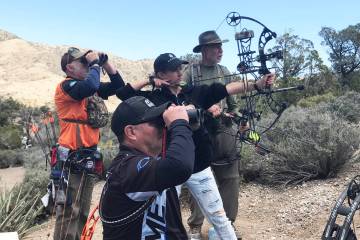Utah trout fishery threatened again by unwelcome fish species
Imagine how you might feel if you spent considerable time and money forming and pouring a new driveway only to come back the day after it was finished and find that someone had walked through the new concrete before it had set. Where you expected to find a relatively smooth surface you find a set of well-defined footprints instead.
My guess is the words, upset, angry and disappointed would not begin to describe your reaction.
Now suppose that you had spent $250,000 and used 70,000 pounds of rotenone, an insecticide highly toxic to fish, to rid one of your state’s most popular trout fisheries of a troublesome fish species that had been illegally introduced and all but destroyed it. Then, after some years passed, you learned that your efforts to restore the trophy trout fishery had been put at risk by someone who left their footprints in your fishery by reintroducing that troublesome fish you worked so hard to eradicate in the first place.
My guess is the words, upset, angry and disappointed, along with a few other adjectives would not begin to describe your reaction.
Such must be the case for fisheries biologists with the Utah Division of Wildlife Resources, which expended that $250,000 and all that rotenone to rescue the Panguitch Lake trout fishery from the notorious Utah Chub in May 2006. By that time, trout only accounted for about 3 percent of the total fish population in what had long been a favorite destination of Southern Nevada anglers, and the catching part of trout fishing had become quite elusive.
When the project was done, however, all the chubs and trout in the reservoir and its tributaries had been removed and the door was open to rebuild the fishery. The DWR started the process by restocking the lake with rainbow and Bear Lake cutthroat trout in the ensuing weeks.
In the 14 years since, that project has proven to be quite successful. Panguitch has once again become a place to catch big fish and has regained its status as a favorite destination for devoted trout anglers. Not only for those from Utah and Southern Nevada, but also those from other parts of the West.
But that could all be about to change, again.
During their spring surveys at Panguitch, DWR biologists discovered the unthinkable while removing their nets. Someone has once again released chubs into the lake. A thoughtless and illegal act that could set the fishery back years at some point.
“It is really frustrating that someone illegally placed them into the lake again,” DWR Southern Region Aquatics Manager Richard Hepworth said in a news release. “We believe they may have been introduced because an angler was using live chubs as bait, which is illegal. Utah chubs compete with trout and can ruin a fishery, as we’ve seen in the past. Right now, we are hopeful that we have the right predator fish in place to keep the chubs from increasing to the point where they take over and we are required to treat the lake again.”
That predatory fish is the Bear Lake cutthroat. According to the U.S. Geological survey, 95 percent of an adult’s diet is comprised of other fish. So there is hope.
The 2006 treatment of Panguitch was not the first but rather the third. The first treatment took place in 1970 and the second in 1991 while I was finishing graduate school in Provo. I remember news coverage of that project. All three projects became necessary for the same reason — Utah chubs. And in each case, it is believed that the problem all started when someone who was fishing illegally with chubs turned their bait bucket over in the lake.
Hopefully, the Bear Lake cutthroats will meet the DWR’s expectations and a fourth treatment will not be necessary.
In the meantime, Panguitch is a good place to get out of the heat and catch some hefty trout. If you go, please be sure to represent Nevada anglers well. There are so many of us that we can have a significant impact on the resource. Be courteous on the boat ramp, on the water, along the shoreline and in the campground.
Freelance writer Doug Nielsen is a conservation educator for the Nevada Department of Wildlife. His “In the Outdoors” column is not affiliated with or endorsed by the NDOW. Any opinions he states in his column are his own. Find him on Facebook at @dougwritesoutdoors. He can be reached at intheoutdoorslv@gmail.com.


















